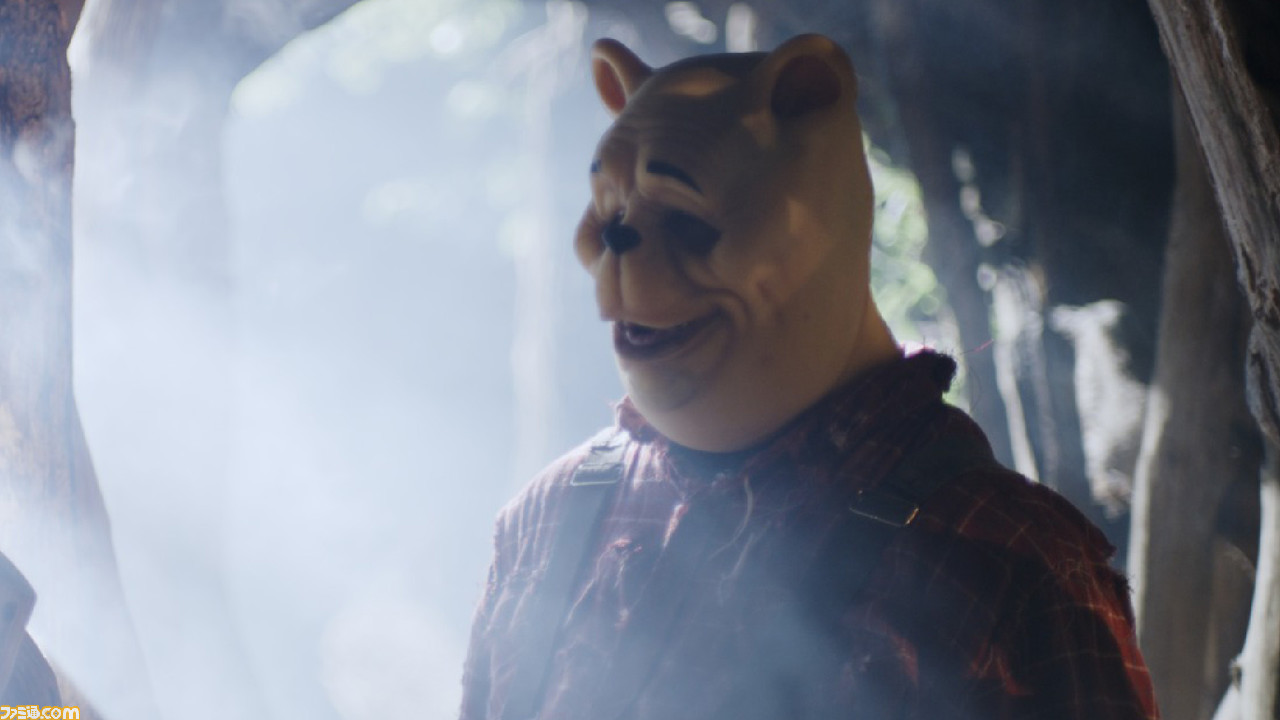Imagine your favorite childhood characters, Winnie the Pooh and Piglet, transformed into bloodthirsty, murderous villains. This is the chilling premise of the independent horror film, “Winnie the Pooh: Blood and Honey,” which has sent ripples of shock and intrigue through the internet. The film, directed by Rhys Frake-Waterfield and featuring Amber Doig-Thorne in the role of a young woman trapped in the cursed woods, has captivated audiences with its dark and disturbing twist on the beloved children’s characters.

Image: www.imdb.com
The film’s intriguing concept, which takes advantage of the public domain status of the original Winnie the Pooh stories, begs the question: why is it so compelling to see beloved childhood characters reimagined as something sinister? The answer lies in the power of nostalgia and our inherent fascination with the unnerving and the taboo. The film’s creators have masterfully captured this disturbing fascination, tapping into our subconscious anxieties about the dark side of innocence.
Unveiling the Darker Side: From Honey to Blood
The core of the film’s success lies in its ability to subvert our expectations and reveal the dark side of familiar characters. Winnie the Pooh, once the epitome of innocence and sweetness, is now a vengeful and violent entity. His yearning for honey has morphed into an insatiable hunger for blood and violence. The film’s director, Rhys Frake-Waterfield, has stated he wanted to portray a “more realistic” Winnie the Pooh, and his decision to depict him as a villainous figure has certainly sparked debate and intrigue.
The film’s visual style, though low budget, is effective in conveying the stark reality of the characters’ transformation. The once-bright and whimsical world of Hundred Acre Wood is now dark and menacing, mirroring the characters’ twisted natures. The use of practical effects, including the unsettling portrayal of Pooh and Piglet, further enhances the film’s disturbing atmosphere.
A Blend of Horror and Nostalgia: The Power of Contrasting Themes
The film masterfully utilizes the power of juxtaposition to create a chilling experience. The innocent, whimsical characters of our childhood are juxtaposed with their now-violent and horrifying alter egos. This creates a sense of unease and discomfort, as it forces us to confront the unsettling reality of our own cherished memories.
The use of familiar elements like the characters’ names, dialogue, and settings, combined with the elements of horror, creates a unique brand of “nostalgia horror.” The film utilizes our emotional connection to these characters to make them more effective as tools of horror. This sense of familiarity, coupled with the unexpected transformation, creates a heightened sense of suspense and terror.
Critical Reception and The Discourse Surrounding “Winnie the Pooh: Blood and Honey”
The film’s release has sparked a mixed bag of reactions, from outrage and criticism to a certain level of morbid curiosity. While some have condemned the film for its exploitation of beloved characters, others have praised its creativity and its ability to tap into the darker side of our shared cultural psyche. The film serves as a stark reminder that even the most beloved characters can be twisted into something sinister.
The film’s creators have defended their decision to portray the characters in such a dark light, claiming it was a deliberate choice to explore the darker side of human nature. Their ambition, however, has been met with a plethora of opinions, ranging from those who believe the film is simply a crude exploitation of nostalgia to those who appreciate the film’s unique take on horror.
Despite the heated debate surrounding the film, it has undeniably captured the public imagination. It has become a trending topic on social media, with fans and critics alike engaging in lively discussions and debates. “Winnie the Pooh: Blood and Honey” has sparked a dialogue about the evolving nature of childhood nostalgia, and the potential for even the most beloved characters to be transformed into something unsettling.

Image: geinou-kininaru-daityousa.blog.jp
Beyond The Controversy: Exploring the Deeper Themes
The film’s themes of childhood innocence, betrayal, and the power of nostalgia resonate on a deeper level. It raises questions about the dark underbelly of our cherished memories and the possibility of innocence being corrupted by darkness. It also explores the darker side of human nature, reminding us that within every person, there is a potential for good or evil.
The film’s success, despite its controversial nature, speaks to the power of creative storytelling and its ability to resonate with the public. Despite its limitations in terms of production value, the film successfully utilizes its unique premise and audacious concept to captivate its audience. It serves as a testament to the fact that even the most unconventional and shocking projects can find a place in the world of entertainment, sparking debate and challenging our perceptions.
Winnie The Pooh Blood And Honey Full Movie
Conclusion
“Winnie the Pooh: Blood and Honey” is more than just a horror film. It’s a commentary on childhood nostalgia and the complex relationship we have with our past. It’s a reminder that even the most cherished memories can be twisted and manipulated, and that the line between innocence and darkness can be thin. Whether you find it disturbing or intriguing, the film undoubtedly pushes boundaries and encourages us to explore the darker side of our collective imagination. The film’s reception, both positive and negative, underscores the power of storytelling, its ability to evoke strong emotions, and its potential to spark important conversations about the complexities of our shared cultural landscape.





